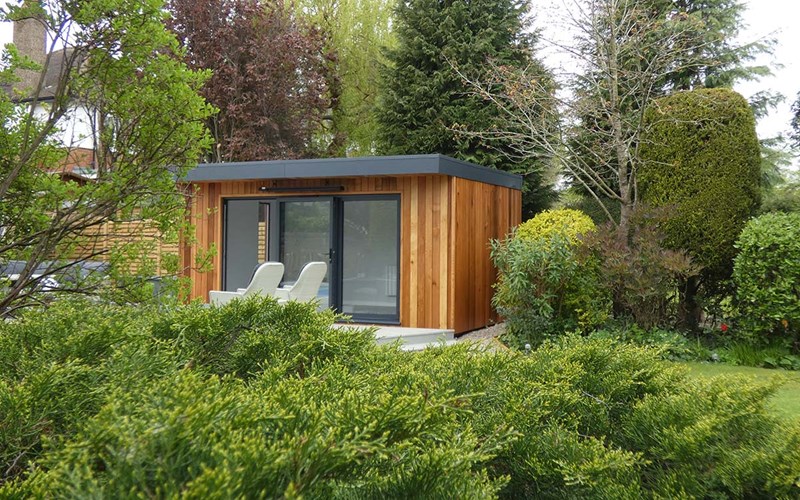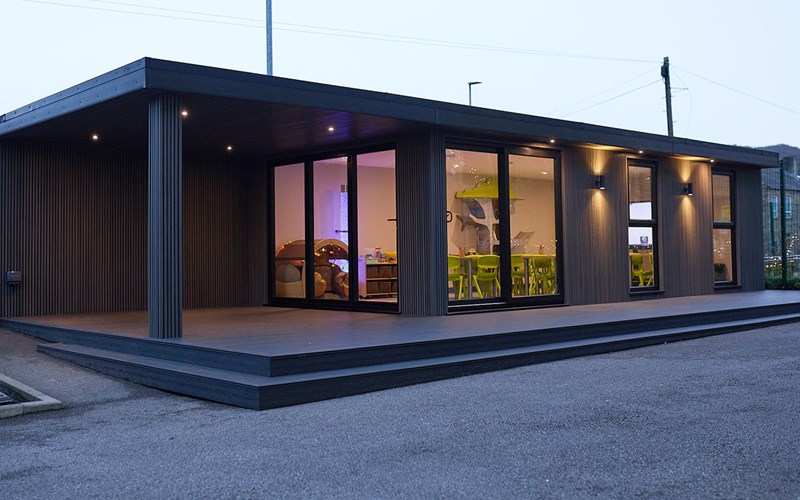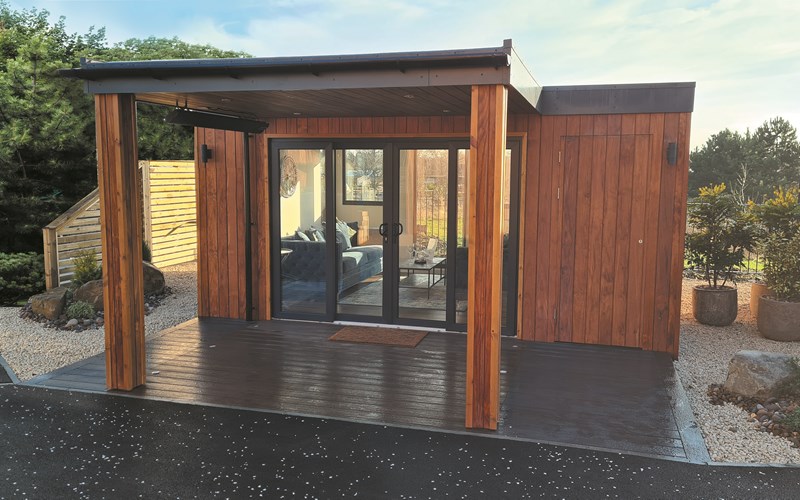What Are the Rules on Garden Room Building Regulations in the UK

When constructing a garden shed or room, depending on your intended use it is essential to take into account planning permission and building regulations.
Understanding Planning Permission for Garden Rooms
So, how do you build without causing visual impact or overshadowing? The answer lies within UK's planning permissions guidelines. These rules dictate everything from size and location to design specifics like maximum height and floor area limits.
If adding a guest bedroom or garden office space sounds appealing, understanding these guidelines will help prevent potential disputes with neighbours or local authorities before it costs you money.
Factors affecting planning permission
Your project might still need to comply with specific approval depending on factors such as designated land status and whether it falls under permitted development rights. You can construct up to 50% of your total garden area without needing explicit approval. Think of single-storey structures that adhere strictly to maximum height restrictions.
When won't you need planning permission?
In general garden rooms are considered a permitted development providing the following conditions are met;
-
Garden Rooms are required to be single-storey with a maximum eaves height of 2.5 metres and a maximum overall height of 4 metres if they have a dual-pitched roof. If they have any other type of roof, the maximum overall height is 3 metres.
-
If the Garden Room is located within 2 metres of the property boundary, it is necessary for the entire building to be no taller than 2.5 metres.
-
You are allowed to build structures on up to 50% of the total area of your garden.
-
The area of your garden, the curtilage, includes all of your land except for the part occupied by the house. This consists of the front garden, side gardens, and back garden, but does not include any other buildings on the property.
-
In conservation areas, the building is restricted at the front or side, but it is permissible to construct a garden room at the back of your property.
-
New buildings cannot be used as separate living spaces, without planning permission and must not have microwave antennas.
When will you need planning permission?
-
If the main building is listed.
-
The garden building occupies more than 50% of the land around the house.
-
The internal floor space is over 30m2
-
You're building on an area of outstanding natural beauty unless it has a maximum size of 10 square metres and is at least 20 metres away from the house.
-
The building is to be placed in front of the front elevation of the house, fronting the highway.
Adherence to building regulations for different sizes of garden rooms
Different size categories have varying levels of regulation. For instance, small detached buildings like a garden shed or summer house, under 15m2, often don't require approval providing it contains no sleeping accommodation.
If you've got bigger plans in mind within the range of 15-30m2, building control will need to be involved if it's built less than a full metre from any boundary or isn't built from mostly non-combustible materials.
Anything larger than 30 square metres will require full building regulations. Furthermore, regardless of size if the space is to be used for sleeping accommodation building regulations approval will be required.
This isn't about making things more complicated - it's all about ensuring safety standards are met during the construction phase for you and your neighbours which can save headaches down the line.
Consequences of not complying with garden room building regulations
If these standards aren't followed correctly during the construction phase, it can lead to significant issues later on including structural instability due to poor foundations or even higher heating costs from inadequate insulation performance. The space could be inhabitable in winter and unbearably warm in the summer.
So while following them might seem tedious, it's better to be safe than sorry.
How inspectors verify compliance with rules when approving plans
Inspectors meticulously scrutinise every aspect of your planned build against established planning regulations.
This process includes everything from verifying foundation integrity to roof specifications and safety measures. It's not just about ticking boxes; it's about guaranteeing structural longevity while also avoiding potential legal issues tied to non-compliance.
What happens after plan approval by inspectors?
A stamp of approval from an inspector signifies more than mere permission for you to proceed, it instils confidence. Confidence in knowing you're on track towards creating a compliant structure which adds value both aesthetically and financially.
What does Make Room Outside Living say about building regulations
"Make Room Outside Living manufactures and installs garden rooms that exceed building regulation standards. We also work closely with the homeowner to ensure the specific location of the building complies with current building regulations and planning rules".
"For peace of mind, you could consider acquiring a 'permitted development letter' from your local council. You would need to visit the council with a rough layout of the garden and an image of the garden room you wish to build".
Ryan Crossley, Director
Conclusion
Understanding building regulations is key to a successful project and you've seen how crucial planning permissions are in the process.
The involvement of an independent inspector can provide an extra layer of assurance for your plans' approval.
If you're ready to add aesthetic appeal and financial value to your home with a dream garden room contact Make Room Outside Living, where we specialise in creating bespoke garden rooms just for you.
FAQs
Do I need to comply with Building Regulations for a garden room?
Yes, if your garden room is over 30m2. If it's between 15m2 and 30m2, you will need to comply only if it's less than a metre away from the boundary.
What is the maximum size of a garden room without planning permission?
The max size of a garden room is 30m2 without planning permission. Furthermore, you can only build on up to 50% of the total area of your land under permitted development rights without needing planning permission.
How close can a garden room be to the boundary?
You can build right up to boundary if under 15m2 anything between 15m2 and 30m2 needs to be 1m away from the boundary. Bear in mind the distance from boundaries can vary based on local regulations.
What are the rules for garden buildings?
Garden buildings must adhere to specific size restrictions, and placement guidelines regarding property boundaries, and may require planning permissions depending on their use and location.
Aug 02 2023



